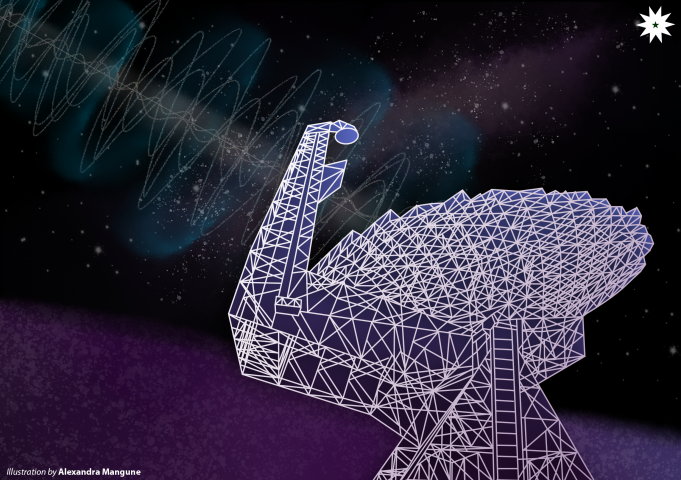“Are we alone in the Universe?”
This is a question that has, for centuries, stumped mankind. Through the efforts of scientists and engineers, the search for extraterrestrial life has seen multiple developments, mainly through the advent of cutting-edge devices. These developments have also introduced new methods of detecting technologically-advanced activity, known as technosignatures, which are considered possible indicators of alien intelligence.
Cathal O’Connell, a researcher and science writer from the University of Melbourne in Australia, says that the discovery of alien life is “inevitable and possibly imminent” due to the “sheer vastness of space; the abundance of life-giving elements like hydrogen, oxygen, and carbon; and the hypothetical idea of life based on other
elements.”
But to this day, the formation of the first cells is a matter of theory. Still, a few experiments have potentially revealed the elusive origins of life. In 1952, Stanley Miller, then a graduate student, mimicked the conditions of early Earth by having a vaporized mixture of water, hydrogen, ammonia, and methane interact with electric sparks. After cooling, the mixture was found to contain amino acids—suggesting that organic compounds like proteins and deoxyribonucleic acids, which are vital components of lifeforms, could be derived from inorganic molecules.
Dr. Stephen Cramer, a research scientist at the Search for Extraterrestrial Intelligence (SETI) Institute, describes the sheer scale of the Universe, “Scientists estimate there are about 100 million stars in typical galaxies, and 100 billion galaxies. We now know most stars have multiple planets. So, I think there are plenty of planets out there that could support life.” And even if a certain planet had the conditions to form life, even as simple as single-celled organisms, what would be the likelihood for the development of civilization and technology just like on Earth?
Improbable or impossible?
“Life on Earth might be about three billion years old, but the technology for sending radio transmissions to outer space is only about 100 years old. How long will our civilization last? Will other more advanced civilizations be interested in sending messages?” Cramer asks; Estimating the likelihood that there are civilizations or technology like ours on Earth would require discovering evidence for not just life, but complex life capable of reaching humanity’s progress or even beyond.
In an attempt to answer such a question, Breakthrough Initiatives in 2016 embarked on the Breakthrough Listen (BL) program, a massive 10-year project based in the Berkeley SETI Research Center. The project currently utilizes four telescopes that allow scientists to “listen” to the radio emissions propagated by potential civilizations from nearby stars and galaxies as well as detect potential artificial lasers from alien technology.
One of these is the Green Bank Telescope (GBT), a steerable radio telescope that can focus on individual stars and galaxies, while the Parkes Telescope searches for radio signals across 13 locations simultaneously within the Milky Way. The MeerKAT Radio Telescope has 64 interlinked receptors to capture the electromagnetic (EM) signals of nearby stars and correlates these into an image of the targeted sky area. An optical telescope, the Automated Planet Finder (APF) Telescope is capable of detecting small planets by analyzing a host star’s constantly fluctuating velocity due to gravity. Further, the BL program makes use of the APF’s sensitivity to lasers in detecting signals across a wide range of the EM spectrum.
Since the program’s launch, BL’s telescopes have collected data throughout different regions of the Milky Way. In March 2019, the program released its first major data set based on a survey of more than 1,300 nearby stars. By February 2020, the second major radio survey data on the Milky Way’s galactic center was released—aggregating to a whopping two petabytes or equivalent to over 80,000 distinct one-hour movies rendered at 1080p resolution. Because these data sets are accessible to the public, unaffiliated scientists and enthusiasts are free to utilize the data for their own studies.
Based on the accumulated data, a major study by the BL program in February 2020 examined the stars within the Earth Transit Zone, the region of space where any extraterrestrial species could see the Earth passing across the sun. With the telescopes covering a massive space region, the radio signals of star systems within 489 lightyears—an area that would fit up to 310 billion Earths—have been analyzed.

Hope with the data
Despite the remarkable figures, the BL program has yet to detect signals of extraterrestrial origin. Nonetheless, with the program’s operation to end in five years, it has ample time to accomplish its main objectives in the near future. Even more groundbreaking data and results may also be revealed within the remaining time frame. In fact, according to a 2019 program-based research report, an average of one petabyte’s worth of raw data is produced per day from the observations of the GBT and the Parkes Telescope. With this much data and more to come, a radio signal from an extraterrestrial device may soon be discovered.
From here, the search for extraterrestrial intelligence will continue to progress with technology. During the 2020 American Association for the Advancement of Science Annual Meeting held in February, several notable scientists, including Berkeley SETI Research Center Director Andrew Siemion, tackled future potential search programs; the BL data and its associated studies; and the James Webb Space Telescope (JWST). A successor to the Hubble Space Telescope, the JWST could be used for detecting chemicals and biosignatures, which are indicators like liquid water and planetary atmosphere that point to life processes.
With SETI and the BL program leading the search for technologically advanced civilizations, JWST directly looking for signs of life, and other extraterrestrial missions, the question that humanity has pondered since the early days of Astronomy may soon have an answer.
“We do not know until we find life elsewhere. In my opinion, given the right conditions, life is inevitable. Maybe it takes one or two billion years to happen, but that is a long time for trial and error,” Cramer concludes.
